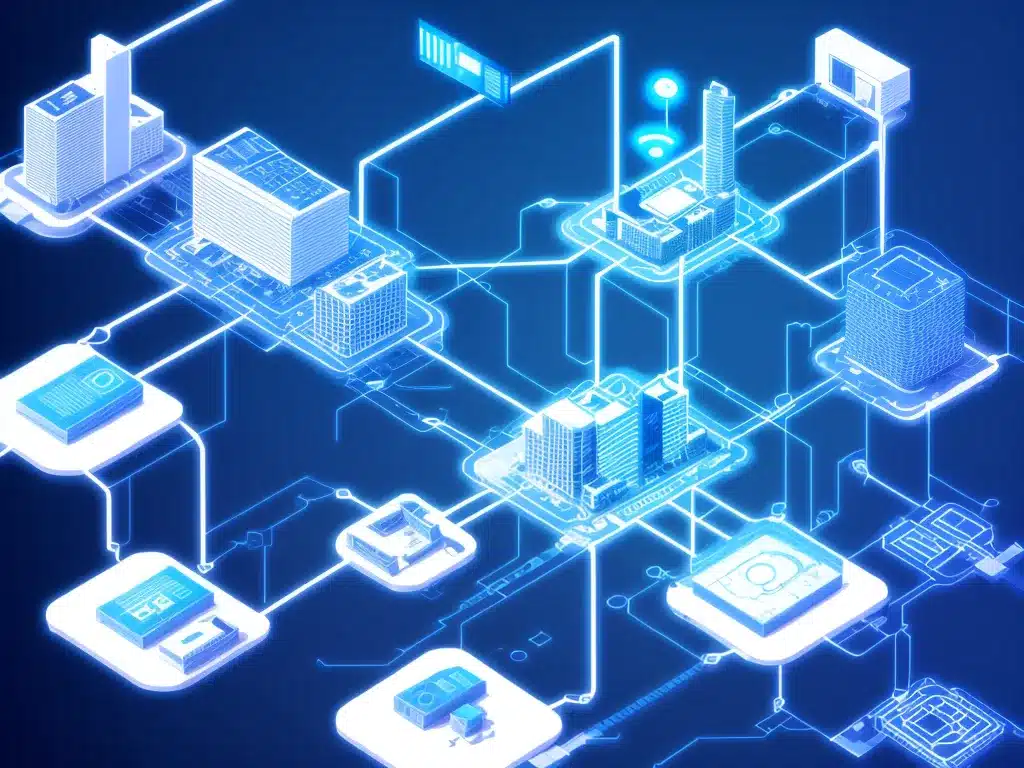Building Smart Infrastructure with IoT Sensors
Introduction
Smart infrastructure powered by the Internet of Things (IoT) is transforming our cities and communities. By installing a network of connected sensors on infrastructure like roads, bridges, and buildings, we can monitor their condition in real time and detect issues before they become problems. In this article, I will provide an in-depth look at how IoT sensors are enabling smarter, more efficient infrastructure.
Key Benefits of IoT Sensors for Infrastructure
Deploying IoT sensors across infrastructure provides several key benefits:
Predictive Maintenance
Sensors can continuously monitor infrastructure conditions like stress, temperature, and vibration. This real-time data enables predictive maintenance, where issues can be identified and addressed before a failure occurs. This prevents costly reactive maintenance.
For example, strain gauges on bridges can identify small cracks before they become critical. Vibration sensors on train tracks detect abnormalities like loose fasteners before a derailment.
Improved Safety
IoT sensors improve safety by identifying risks. For instance, tilt sensors on unstable slopes can predict landslides. Leak detection sensors in tunnels can identify flooding risks. Real-time monitoring enables preemptive actions to mitigate hazards.
Optimized Efficiency
Sensors also optimize operations. For example, occupancy sensors in buildings adjust HVAC and lighting automatically to save energy. Traffic sensors monitor congestion and adjust signal timing to improve flow.
Informed Decision Making
The data from IoT sensors provides valuable insights for planning. Historical monitoring data can model deterioration rates and inform maintenance and repair strategies. Sensor data also helps justify infrastructure investments.
Challenges in Implementing IoT Sensors
While IoT sensors offer major benefits, there are also key implementation challenges:
-
Connectivity – Sensors may be located in remote areas without networking infrastructure. Solutions like mesh networks and low-power wide area networks help connect distributed sensors.
-
Power – Sensors often rely on battery or solar power. Energy harvesting and low-power designs maximize sensor lifespan.
-
Durability – Sensors must withstand weather, vibration, and other environmental challenges. Ruggedized housing and mounts secure sensors.
-
Data Management – The volume of sensor data presents analytics and storage challenges. Edge computing and cloud platforms help process and analyze large datasets.
Types of IoT Sensors for Infrastructure
Many types of IoT sensors are applicable to infrastructure:
Structural Health Monitoring
-
Strain gauges – Measure stresses on structures. Useful for monitoring bridges, dams, and buildings.
-
Accelerometers – Measure structural vibration. Help detect abnormal movements.
-
Tilt sensors – Measure inclination changes. Monitor retaining walls, foundations, and slopes for movement.
Environmental Monitoring
-
Anemometers – Measure wind speed. Useful for wind turbines, bridges, and buildings.
-
Temperature sensors – Monitor weather and internal building temperatures.
-
Humidity sensors – Track environmental moisture levels.
Usage Monitoring
-
Pressure plates – Measure weight and pressure. Can monitor vehicle traffic and foot traffic.
-
Flow meters – Track water, gas, and fluid flows through pipes and tunnels.
-
Occupancy/motion sensors – Detect building or room occupancy and usage.
Leak Detection
-
Water leak sensors – Identify floods and pipe breaks by detecting water.
-
Gas leak sensors – Detect dangerous gas leaks through air monitoring.
Implementing an IoT Sensor Network
Here are the key steps to implement an IoT sensor network for infrastructure:
-
Assess infrastructure – Survey assets to determine sensor needs and locations. Identify critical monitoring points.
-
Select sensor types – Choose the right sensors based on monitoring goals, environment, and costs.
-
Install sensors – Deploy sensors at identified locations. Use rugged, weatherproof mounts and housings.
-
Connect network – Enable wired or wireless communication between sensors and central servers.
-
Manage data – Collect, process, and analyze streaming sensor data in the cloud or edge computing systems.
-
Visualize insights – Present sensor data insights through dashboards and alerts for infrastructure operators.
Real World Examples
IoT sensors are actively improving infrastructure around the world:
-
Singapore’s Virtual Singapore initiative uses extensive IoT sensor networks across buildings, infrastructure, and environments to aid urban planning.
-
The Union Pacific Railroad has deployed wayside sensors across its 32,000 miles of track to detect potential equipment issues early.
-
The Millau Viaduct Bridge in France uses fiber optic sensors to monitor its huge steel structure for micro-movements and corrosion.
Conclusion
Deploying IoT sensors on infrastructure provides invaluable real-time data to improve maintenance, safety, efficiency, and planning. With benefits like predictive maintenance and optimized operations, IoT sensors are enabling smart, sustainable infrastructure development. Challenges exist, but the rapid evolution of IoT technologies is making robust sensor networks more viable than ever.













